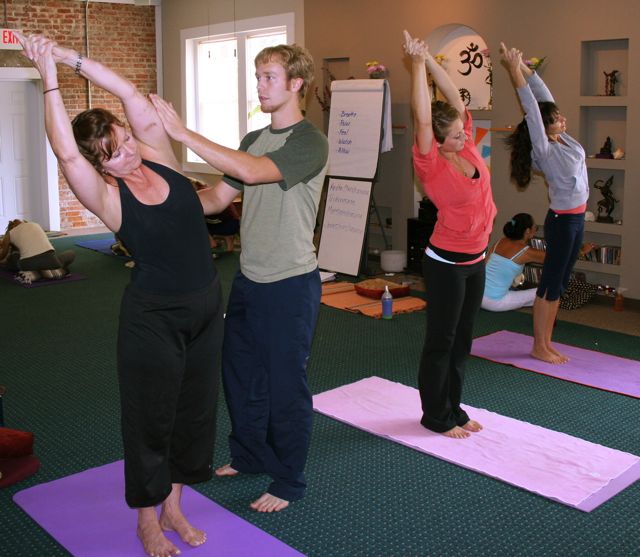
Yoga is more than just a practice; it’s a lifestyle that encompasses physical, mental, and spiritual growth. As a result, many people are drawn to become yoga instructors, eager to share the benefits of yoga with others. Whether you’re looking to start a new career or simply deepen your practice, becoming a yoga instructor is a rewarding journey. Here’s a step-by-step guide to help you on your path to becoming a certified yoga instructor.
Deepen Your Personal Yoga Practice
Before stepping into a teaching role, it’s essential to have a deep connection to yoga. Developing a regular practice will give you the foundation you need to understand the postures, breathing techniques, and philosophies behind yoga. This experience will also help you understand the nuances of the practice and allow you to teach with authenticity.
Action Steps:
- Practice yoga consistently.
- Explore different styles such as Hatha, Vinyasa, and Ashtanga.
- Attend classes with different teachers to expand your perspective.
Choose Your Yoga Style
Yoga encompasses various styles, each with its unique approach. Some styles are physically demanding, while others focus more on relaxation and meditation. It’s important to explore and select a style that aligns with your personal practice and teaching goals. Some popular styles include:
- Hatha Yoga: A gentle introduction to physical postures and basic yoga principles.
- Vinyasa Yoga: A more dynamic style with flowing movements, synchronized with breath.
- Ashtanga Yoga: A rigorous, fast-paced style with a set sequence of poses.
- Yin Yoga: Focuses on long-held, deep stretches and is calming for both body and mind.
Choosing a style you resonate with will guide your decision on which teacher training program to pursue.
Enroll in a Yoga Teacher Training (YTT) Program
Once you’ve selected a style, the next step is to enroll in a Yoga Teacher Training (YTT) program. This training will provide you with the knowledge, skills, and tools to teach yoga effectively. The most recognized certification comes from Yoga Alliance, which sets the standards for yoga education.
Key Points of YTT:
- 200-Hour Training: This is the standard entry-level certification for yoga teachers and includes comprehensive courses in anatomy, philosophy, teaching techniques, and class sequencing.
- 300-Hour Training: This advanced certification builds upon the 200-hour training and is ideal for those wishing to deepen their teaching expertise.
- Program Format: Yoga Teacher Training programs can vary in length, with full-time and part-time options available. They can be completed in-person, online, or in hybrid formats.
What You’ll Learn in YTT:
- Anatomy and Physiology: Understanding the body and how it moves is essential to safely teaching yoga.
- Yoga Philosophy: Explore the ancient texts like the Yoga Sutras and Bhagavad Gita to understand the spiritual roots of yoga.
- Teaching Techniques: Learn how to create and deliver well-structured yoga classes with proper cues and sequencing.
- Hands-On Practice: You’ll spend time teaching others under the supervision of experienced instructors to develop confidence and refine your style.
Complete the Required Hours and Gain Teaching Experience
Yoga Teacher Training is not just about classroom learning; it’s also about practical experience. Most YTT programs require you to log teaching hours, which involve leading classes, practicing your cues, and building rapport with students. This hands-on experience is essential for honing your skills as a teacher.
Action Steps:
- Start teaching small groups or individual classes.
- Seek feedback from mentors and fellow trainees.
- Attend additional workshops or courses to refine specific skills.
Obtain Certification and Register with Yoga Alliance
Upon completing your YTT program, you’ll receive your teaching certification. If your program is accredited by Yoga Alliance, you can register as a Registered Yoga Teacher (RYT), which is recognized globally.
- RYT-200: The entry-level certification you receive after completing 200 hours of training.
- RYT-500: A more advanced certification, achieved after completing both 200-hour and 300-hour training.
Becoming a registered yoga teacher gives you credibility and the opportunity to teach in various settings, from studios to private sessions.
Commit to Continuing Education
Yoga is a lifelong journey, and as a teacher, you’ll always have room to grow. Continuing education helps you stay current with trends, refine your skills, and deepen your knowledge. This may involve attending workshops, completing advanced certifications, or studying new styles of yoga.
Ideas for Continuing Education:
- Attend advanced teacher training courses.
- Learn about related topics like meditation, pranayama (breathwork), or Ayurveda.
- Participate in community events to connect with other yoga teachers and students.
Start Teaching and Build Your Career
Now that you’re certified, it’s time to start teaching! You can begin by offering classes at local studios, gyms, or wellness centers. You might also choose to teach private sessions or create an online yoga platform.
To build a successful yoga career, consider the following:
- Create a Personal Brand: Define your teaching style, your values, and what sets you apart as a teacher.
- Build an Online Presence: Develop a website or social media profile to showcase your classes and connect with potential students.
- Network: Attend yoga conferences, collaborate with other instructors, and stay involved in your local yoga community.
Establish a Sustainable Yoga Practice
As you gain experience and build your career, it’s important to maintain your own personal practice. Being a yoga teacher requires you to not only guide others but also stay grounded in your practice. Taking time for self-care and ongoing learning will ensure that you remain an inspiring and effective instructor.
Conclusion
Becoming a yoga instructor is a deeply fulfilling journey that requires dedication, passion, and a commitment to lifelong learning. Whether you’re looking to teach part-time or make it a full-time career, the skills and wisdom you gain along the way will have a positive impact on both you and your students. Follow these steps, and soon you’ll be empowering others to transform their lives through the practice of yoga.
